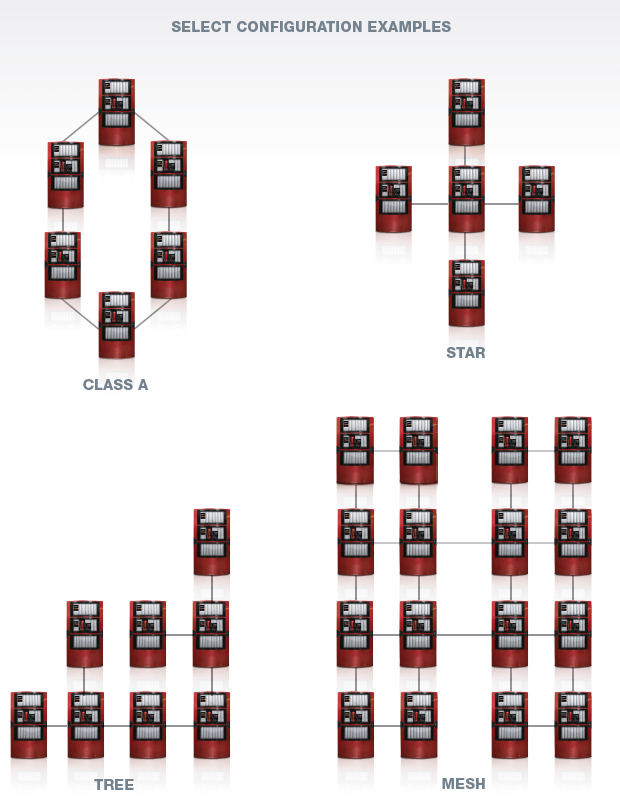
Scalability considerations with the EST4 system
In today’s ever-evolving technological landscape, scalability has become an indispensable aspect of any system. Efficiently managing resources, accommodating increasing workloads, and adapting to changing demands are crucial for any software or hardware solution’s smooth functioning and long-term success. This article explores the scalability considerations associated with the EST4 system, a cutting-edge platform that pushes the boundaries of innovation. By understanding the key features and technical specifications of EST4, analyzing its scalability challenges, and discussing strategies for enhancing scalability, we can gain valuable insights into the future of this remarkable system.
Understanding the EST4 System
The EST4 system is a revolutionary life safety solution that allows buildings to meet required codes and leverage technology to introduce many benefits. It integrates advanced technologies to provide a comprehensive and efficient solution for protecting buildings and occupants. A key factor that sets EST4 apart is its scalability, allowing it to scale up or down to accommodate changing business requirements effortlessly.
Key Features of the EST4 System
The EST4 system boasts various features contributing to its exceptional flexibility and scalability. These include:
- Modular Capability: The modular nature of the EST4 system allows for the addition of features that are necessary, while eliminating the cost of those that are not.
- Advanced Network Architecture: The flexible network topology of EST4 enables systems to be deployed in a number of configurations, including classes B, A, X, N, or full mesh using copper, fiber, or ethernet cable. Supported configurations such as star, tree, or mesh reduce cost by eliminating unnecessary system wiring.
- Easy Additions: Organizations can easily incorporate EST4 into their current systems, leveraging its capabilities without needing a complete overhaul. Panel-to-panel communications can leverage existing infrastructure, such as fiber optics, significantly reducing expansion costs.
- Distributed Processing: By leveraging distributed computing capabilities, increases survivability and ensures uninterrupted performance and improved safety in the event of an emergency. This distributed approach allows for efficient processing of tasks, reducing bottlenecks and enhancing overall system performance.
These features make the EST4 system a reliable and scalable solution for organizations of all sizes. Whether it’s a small startup experiencing rapid growth or a large enterprise with complex operations, EST4 can handle the demands and provide a solid foundation for future expansion.
Technology that Protects
The EST4 control panel is the core of your fire and life safety system. Not only does it introduce a number of benefits, but it also supports enhanced technology in other system components.
- Support for Signature Optica Detection
Signature Optica Detectors reduce nuisance alarms while sensing the presence of smoke according the latest UL requirement, UL268 7th edition. Optica detectors are supported by the EST4 as well as other legacy panels that may be part of a system, including EST3, EST3x, iO, Quickstart, or EST2.
- Support for Genesis LED Notification Appliances
Genesis LED notification appliances introduce several new benefits while meeting the latest UL codes, which require a 20ms strobe pulse. They also drastically reduce the current draw required, which allows more devices on a single loop and reduces the cost of power supplies to support the system. Genesis LED devices are fully compatible with legacy Xenon devices and can be placed on the same circuit within the same field of view.
- Part of an Incident Management Platform
EST4 systems can be integrated into the FireWorks Incident Management system for larger facilities or campus environments. FireWorks features enhanced cybersecurity protection, an improved GUI, and the ability to integrate with multiple life safety systems.
Importance of Scalability in Systems
Scalability plays a pivotal role in the success of any system, and the EST4 system is no exception. By effectively managing scalability, organizations can achieve multiple advantages, such as:
- Improved Performance: Scalable systems ensure consistent performance despite growing workloads, providing smooth user experiences and maintaining optimal productivity.
- Cost Efficiency: Scalable solutions allow organizations to grow along with the needs of their facilities, preventing unnecessary expenses on underutilized infrastructure.
- Future Readiness: Scalability prepares systems for future growth and technological advancements, ensuring longevity and adherence to the latest life safety codes.
Scalability is a critical aspect of system design that must be considered. It allows organizations to protect their investment in their life safety system and adapt to changing circumstances. Without scalability, the cost of maintaining compliance could rise substantially due to changing equipment needs.
Final Thoughts on EST4 Scalability
As organizations look to grow, protect their investment, and meet code requirements, the EST4 system’s scalability features perfectly match these needs. By taking advantage of the system’s technology advancements, organizations can ensure their long-term success and stay ahead in a competitive landscape.
Contact us today for more information on how Firecom can seamlessly integrate an EST4 system into your business.


